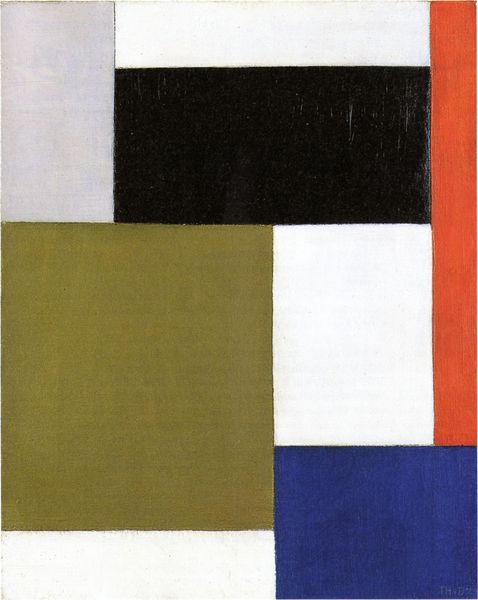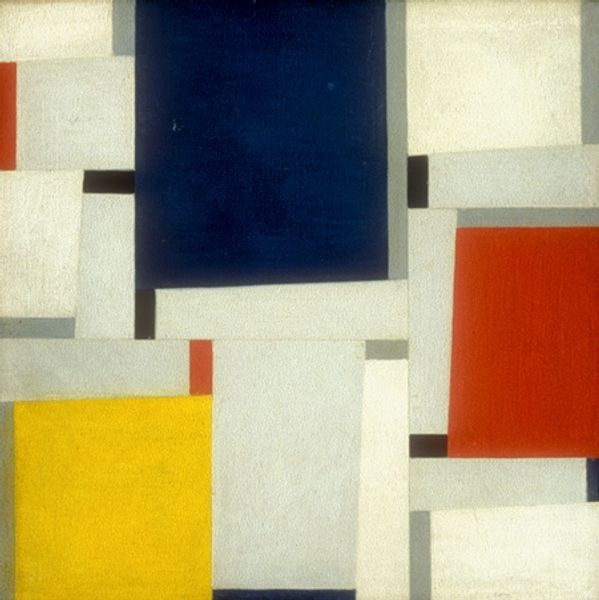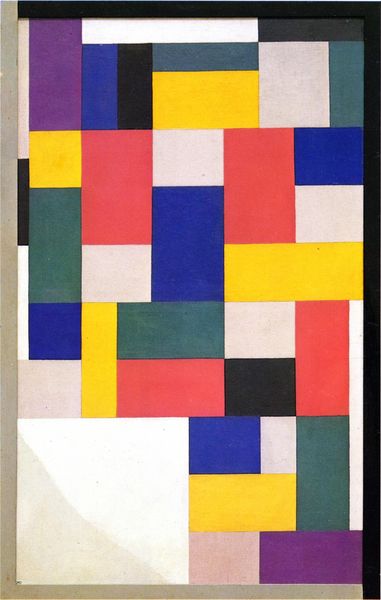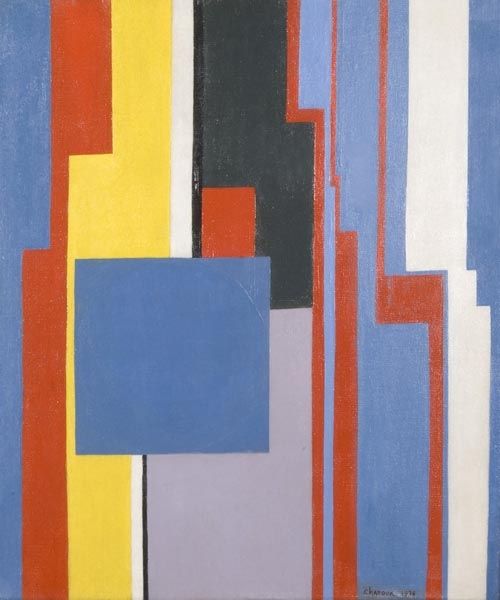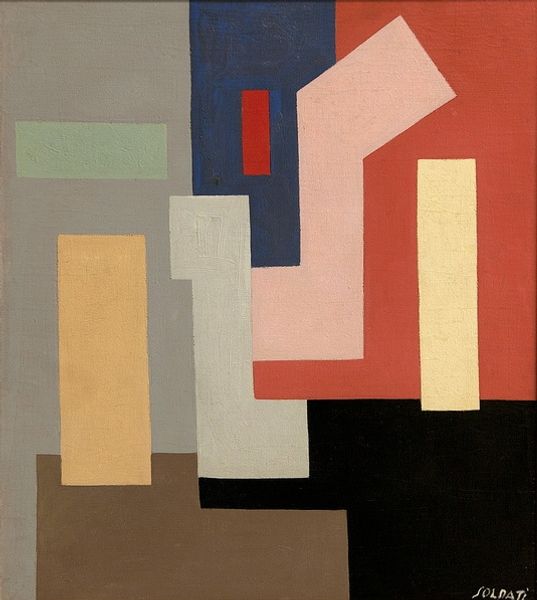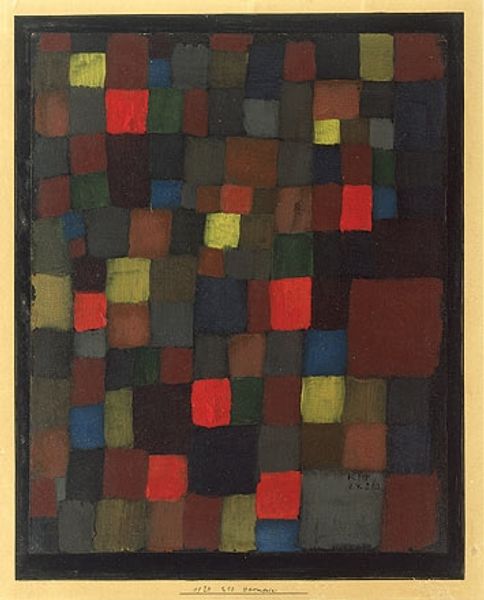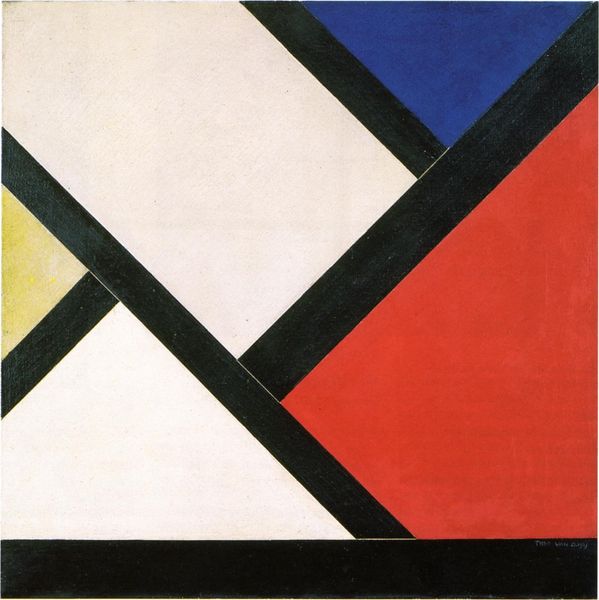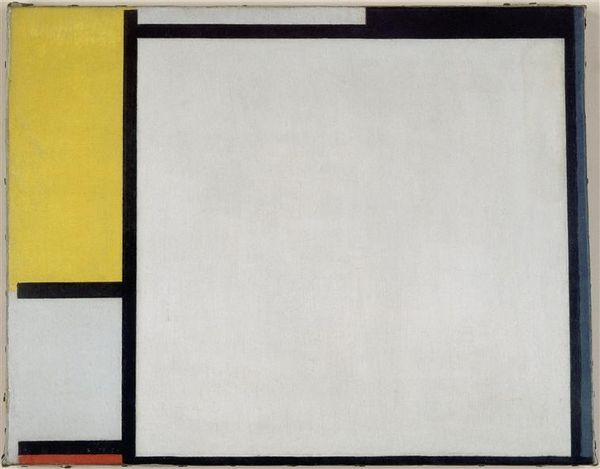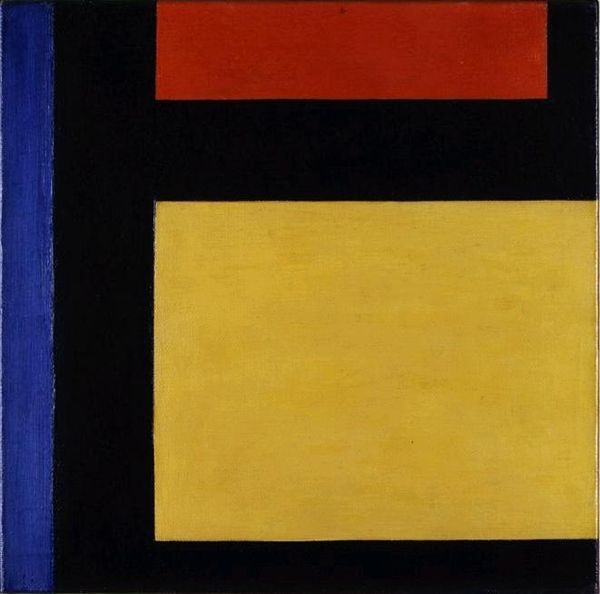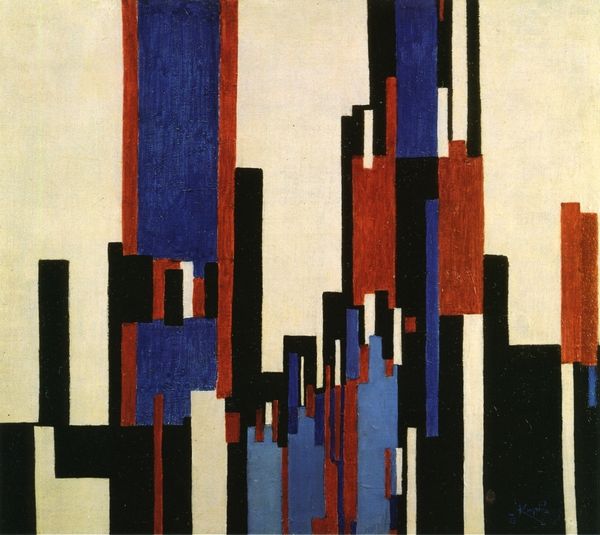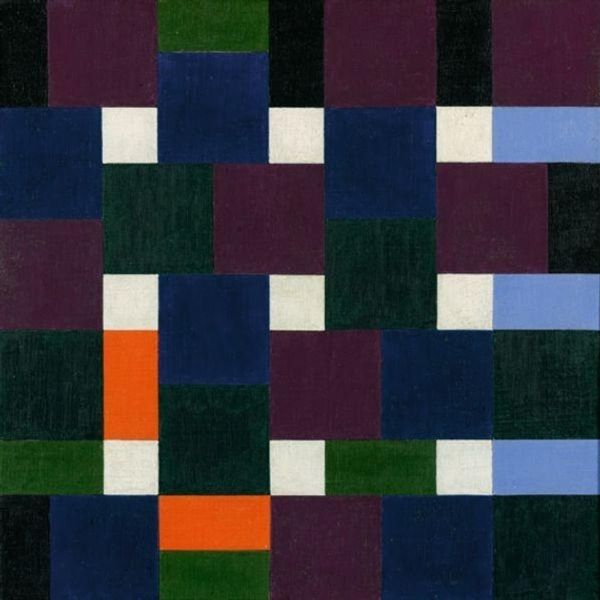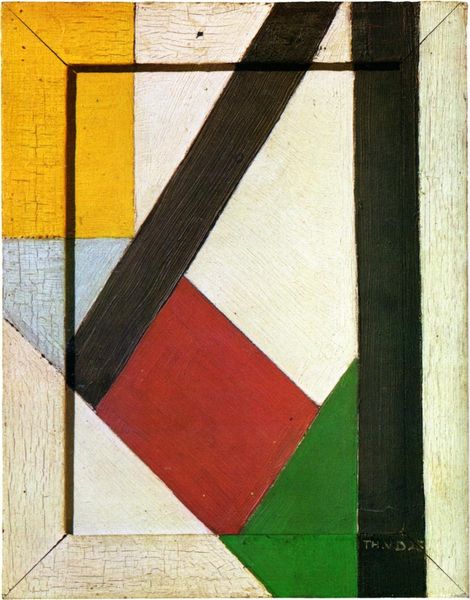
painting, oil-paint
#
de-stijl
#
neo-plasticism
#
painting
#
oil-paint
#
geometric composition
#
form
#
geometric
#
geometric-abstraction
#
abstraction
#
line
#
modernism
Dimensions: 50 x 50 cm
Copyright: Public domain
Curator: Looking at this geometric abstraction by Theo van Doesburg, painted in 1922 and titled "Composition XXII," I find it remarkably…balanced, would you agree? The blocks of color, their relationships… it creates a serene effect. Editor: Serene? I find it… deliberate. These oil paints feel restrained, almost manufactured. What kind of brushstrokes are we seeing? Minimal, I imagine, for that hard-edged quality. The de Stijl movement aimed for universal harmony, yes? How were these utopian ideals applied by Van Doesburg in practice through industrial society at the time? Curator: Van Doesburg's embrace of right angles and primary colours, as evident in "Composition XXII," was a conscious effort to strip away the subjective and the decorative, right? His interest in functional aesthetics definitely speaks to industrialism in Europe back then. His ideas, and the whole of the De Stijl group, impacted architecture, typography, furniture. Editor: Certainly, the movement sought total integration, but tell me, what are your views about the formal interplay in this particular composition? Look at the relations between line and plane, or colour. And do you really think his goal to embrace "universal" values isn't naive in a context where the industry heavily exploits labourers of colour? Curator: I think it’s difficult to disconnect the formal language from its political implications, the emphasis on clean lines, pure forms and their aspiration to create what they called "objective beauty". Even with good intentions, such aesthetic decisions will certainly result in a hierarchical relation and be rooted in social status. I think its visual expression of functionality might also suggest other, far more relevant social anxieties that could benefit the bourgeois. It raises interesting points regarding aesthetic responsibility in times of industrial transition and its socio-economic consequences. Editor: Exactly. So the "serenity" is loaded. The visual purity is complicit. Looking closely at these flat, unmodulated fields of colour and these sharp orthogonals of Neo-Plasticism, it offers an insight into how abstract principles interact with production forces to mirror social control. Van Doesburg offers so much food for thought beyond merely the geometry!
Comments
No comments
Be the first to comment and join the conversation on the ultimate creative platform.
